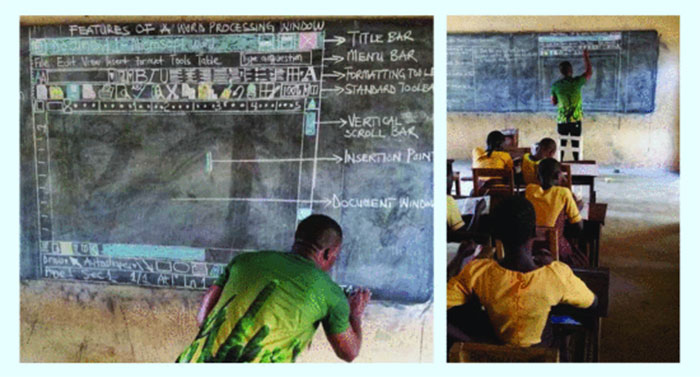
Many of us marveled in awe in March 2018 at the sight of the Ghana teacher who, using colored chalk, drew on his blackboard a snapshot of how an open window of the Microsoft Word software would look like on the screen of a computer [1]; see Figure 1. His school did not have any computers and his young students needed to prepare to pass the Ghanaian national exam, which requires familiarity with computing and information technology. I was not only moved by the action of this amazingly dedicated and patient teacher drawing his creation on the board, but also by the sight of his attentive students sitting on their desks and copying the information from the blackboard onto their notebooks. Just pause for a while and consider how revealing these images are about human nature and its restless drive for knowledge.
While we take for granted our desk computers, software packages, laptops, and smartphones, without even giving a thought as to how precious these tools are, there are eager students, with great potential, in disadvantaged regions yearning to imagine what the screen of a computer would look like! It appears to them as if computers are characters from a fictional novel. That is a shameful gap; one that continues to exist today at the dawn of the 21st century.

